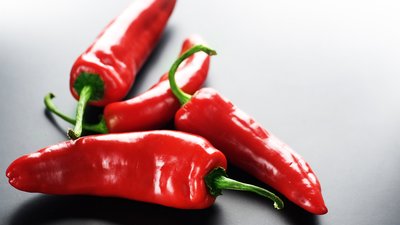Consistency is crucial in the weight room and the kitchen. For example, to get bigger and stronger, you'll probably need to perform some of the same exercises over and over again. In your diet, eating variations on the same dishes can help you keep your nutritional plan airtight and your meal prep straightforward.
Sticking to the same monotonous flavors can leave you dreading the meal to come, however. Adding spice is the easiest way to breathe new life into the same old food! And not only are these spices delicious and calorie-free, they've been shown to have a beneficial impact on body composition and performance.
Is your spice rack up to date? If not, add these four to your grocery list!
1. Turmeric
Turmeric is a plant native to Southeast Asia, and it's a staple in many Indian dishes. Beyond the unique savory flavor it provides, this golden spice has a rich history of providing many health benefits, which is why it's been used in Ayurvedic medicine for centuries.[1]
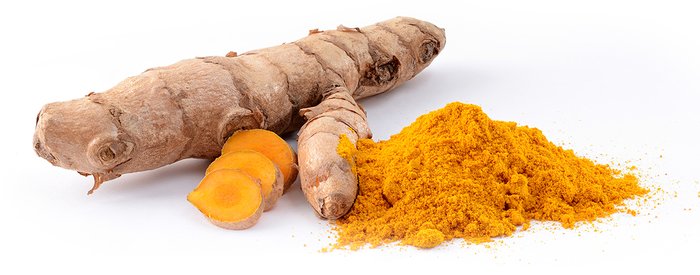
One possible benefit that has gotten a lot of press in recent years is turmeric's anti-inflammatory properties. It's purported that turmeric can help to alleviate muscle soreness and also lessen the stress response to exercise. A study published in the Journal of the International Society of Sports Nutrition provided turmeric to cyclists undergoing exhaustive exercise and found that those taking the turmeric had significantly lower levels of stress and inflammatory markers upon completion of the exhaustive bouts.[2]
Furthermore, a study done in rats found that those supplementing with turmeric showed significantly less muscle damage following a muscle-damaging exercise protocol.[3]
Spice it up: Try adding ground turmeric powder to curry dishes or stews, frittatas or scrambles, and all things grains and veggies.
2. Cinnamon
Cinnamon is one of the world's great spices, not only for its flavor, but also its ability to turn up the flavor in both sweet and savory dishes. But this potent brown powder also delivers a slew of benefits that may just help you present your best beach body yet.
For one, cinnamon has a profound impact on glucose control. This is related to high levels of the bioactive compound methylhydroxychalcone polymer (MHCP), which provides an insulin-mimicking effect. When you eat cinnamon, several enzymatic reactions are triggered that ultimately lead to prolonged digestion and slower entry of glucose into the blood.[4]
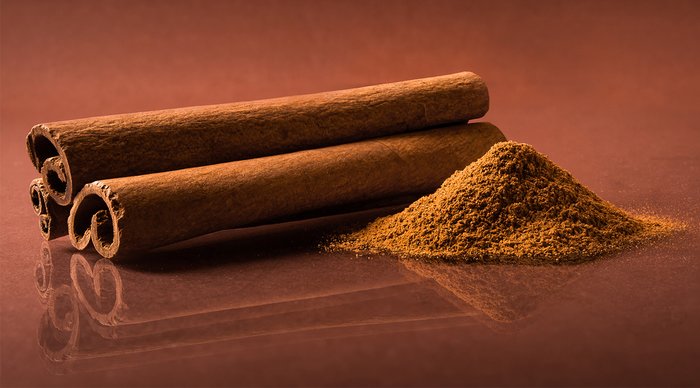
Ingesting 3-6 grams of cinnamon has been shown to have a positive impact on blood glucose levels following a meal, as well as significantly delaying gastric emptying rates.[5,6] Although it hasn't been shown to directly influence satiety, a slower digestion rate may keep you from snacking in between meals.
Spice it up: Cinnamon tastes great on just about anything. Throw it in your morning smoothie, protein shake, or oats, sprinkle it atop Greek yogurt, or even mix it into your ground turkey.
3. Cayenne Pepper
Cayenne pepper is part of the Capsicum annuum family, which makes it a relative of paprika, bell peppers, and jalapenos. You may know that this bright red powder provides intense flavor, but it can kick up your fat-loss efforts.
The active ingredient in cayenne pepper is capsaicin. Capsaicin has been shown to increase energy expenditure and fat oxidation via increase in sympathetic (nervous system) activity.[7] No wonder it's a staple ingredient in plenty of contemporary fat-burning supplements!
The capsaicin content of cayenne pepper varies greatly, but it's thought to be between 0.1-60.0 milligrams per gram of capsaicin.[8,9] Based on these numbers, it's estimated that a single tablespoon may contain between 0.8-480 milligrams of capsaicin. Most studies examining the impact of capsaicin have used a teaspoon or less.
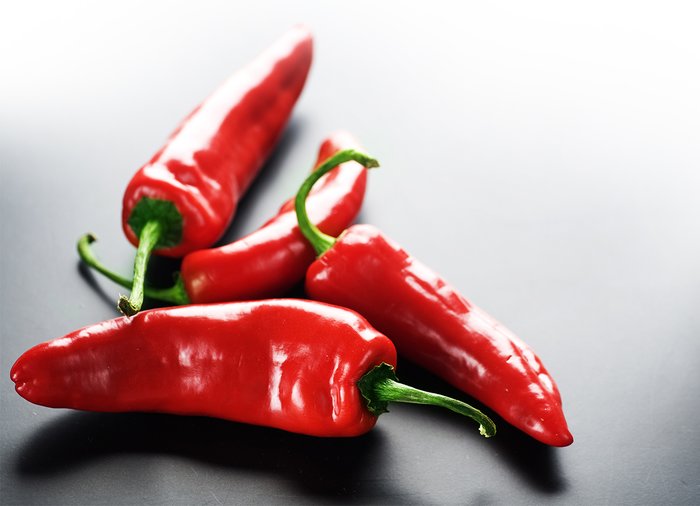
A study published in the Public Library of Science (PLOS) found favorable and significant changes in the rate of fat oxidation and total calorie balance in subjects supplementing with just 2.56 milligrams of capsaicin at each meal during a one-day period.[10]
Furthermore, supplementing with capsaicin has been shown to maintain a higher rate of reliance on fat as fuel coming out of a diet.[11] In a study published in the British Journal of Nutrition, 91 individuals underwent a four-week very-low-calorie diet, followed by a three-month maintenance period. During the maintenance period, half of the subjects took 135 milligrams of supplemental capsaicin per day. Subjects taking the capsaicin maintained higher levels of fat oxidation throughout the three-month maintenance period compared to those not taking capsaicin.
Spice it up: Add cayenne to any cooked protein, stew, soup, or egg dish you make, but be warned that the heat is strong and can vary by brand or age. Start with a little, and assess your tolerance before piling it on.
4. Ginger
Ginger is a pungent spice that has a distinctive and instantly recognizable flavor. In root form, it comes shaped like a tree trunk, with a pale brown exterior and fibrous, slightly yellow interior. Native to many Asian countries, its culinary use spans the continent, but this root has been used in folk medicine for decades—and for good reason! One of its many health benefits is its anti-inflammatory effect.
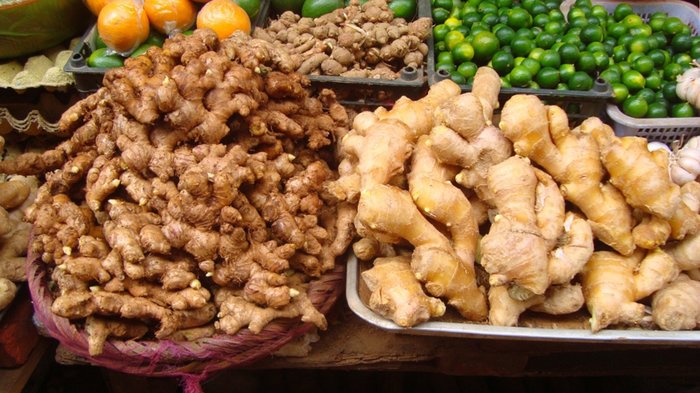
In a study published in The Journal of Pain, researchers looked at the impact of consuming 2 grams of ginger daily on reducing muscle soreness following a bout of 18 eccentric-focused exercises.[12] The supplementation group reported less muscle soreness compared to the placebo group throughout the next 24 hours.
If you're new to training, or starting a new exercise routine, experiencing delayed-onset muscle soreness will be inevitable. But adding ginger to your nutritional routine may help you get back into the gym sooner rather than later.
Spice it up: Ginger is available both in its fresh root form or powdered form. When working with the root version, it can be stored peeled in the fridge, wrapped in a wet paper towel, for up to three weeks.
Powdered ginger can be stored in your spice cabinet, but many people find the flavor of the fresh item superior. Try blending fresh ginger in your stir-fry, soup, or if you're feeling spicy, a smoothie or protein shake!
References
- Benzie, I. F., & Wachtel-Galor, S. (Eds.). (2011). Herbal medicine: biomolecular and clinical aspects. CRC Press.
- Sciberras, J. N., Galloway, S. D., Fenech, A., Grech, G., Farrugia, C., Duca, D., & Mifsud, J. (2015). The effect of turmeric (Curcumin) supplementation on cytokine and inflammatory marker responses following 2 hours of endurance cycling. Journal of the International Society of Sports Nutrition,12(1), 1.
- Davis, J. M., Murphy, E. A., Carmichael, M. D., Zielinski, M. R., Groschwitz, C. M., Brown, A. S., ... & Mayer, E. P. (2007). Curcumin effects on inflammation and performance recovery following eccentric exercise-induced muscle damage. American Journal of Physiology-Regulatory, Integrative and Comparative Physiology, 292(6), R2168-R2173.
- Jarvill-Taylor, K.J., Anderson, R.A. & Graves, D.J. (2001). A hydroxychalcone derived from cinnamon functions as a mimetic for insulin in 3T3-L1 adipocytes. Journal of the American College of Nutrition, 20(4), 327-336.
- Hlebowicz, J., Darwiche, G., Bjorgell, O. & Almer, L.O. (2007). Effect of cinnamon on postprandial blood glucose, gastric emptying, and satiety in healthy subjects. American Journal of Clinical Nutrition, 85(6), 1552-1556.
- Hlebowicz, J., Hlebowics, A., Lindstedt, S., Bjorgell, O., Hoglund, P. Holst, J.J., Darwiche, G. & Almer, L.O. (2009). Effects of 1 and 3 g cinnamon on gastric emptying, satiety, and postprandial blood glucose, insulin, glucose-dependent insulinotropic polypeptide, glucagon-like-peptide 1, and ghrelin concentrations in healthy subjects. American Journal of Clinical Nutrition, 89(3), 815-821.
- Matsumoto, T., Miyawaki, C., Ue, H., YUASA, T., MIYATSUJI, A., & MORITANI, T. (2000). Effects of capsaicin-containing yellow curry sauce on sympathetic nervous system activity and diet-induced thermogenesis in lean and obese young women. Journal of Nutritional Science and Vitaminology,46(6), 309-315.
- Kang, J. Y., Alexander, B., Math, M. V., & Williamson, R. C. N. (1993). The effect of chilli and its pungent ingredient capsaicin on gastrointestinal transit in the rat. Journal of Gastroenterology and Hepatology, 8(6), 513-516.
- Thapa, B., Skalko-Basnet, N., Takano, A., Masuda, K., & Basnet, P. (2009). High-performance liquid chromatography analysis of capsaicin content in 16 Capsicum fruits from Nepal. Journal of Medicinal Food, 12(4), 908-913.
- Janssens, P. L., Hursel, R., Martens, E. A., & Westerterp-Plantenga, M. S. (2013). Acute effects of capsaicin on energy expenditure and fat oxidation in negative energy balance. PloS One, 8(7), e67786.
- Lejeune, M. P., Kovacs, E. M., & Westerterp-Plantenga, M. S. (2003). Effect of capsaicin on substrate oxidation and weight maintenance after modest body-weight loss in human subjects. British Journal of Nutrition, 90(03), 651-659.
- Black, C. D., Herring, M. P., Hurley, D. J., & O'Connor, P. J. (2010). Ginger (Zingiber officinale) reduces muscle pain caused by eccentric exercise. The Journal of Pain, 11(9), 894-903.

